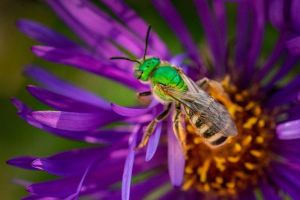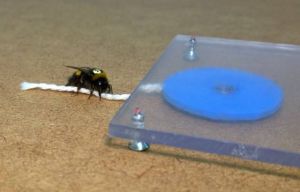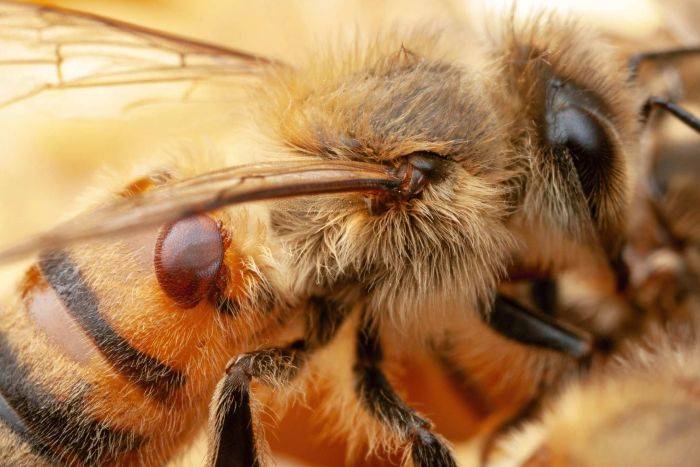
(Supplied: Alex Wild)
Colony Collapse Disorder caused the loss of an estimated 40 per cent of honey bee colonies in the US last year — the worst winter decline on record for tracked hives since research began.
Now researchers have genetically engineered a bacterium that lives in the gut of honey bees, to boost their ability to fight off pathogens that are often responsible for colony collapse.
Key points:
- The researchers found a bacterium that only occurs in the gut of honey bees
- They genetically modified that bacterium to create a defence against Varroa mite and deformed-wing virus
- GM regulations mean more controlled testing is required before it is released
Colony Collapse Disorder was first identified in 2006, and is a phenomenon where bees desert a colony en masse.
As bees not only produce honey but are crucial to pollination of plants worldwide, there have been grave fears for how bad the decline could get.
A number of stressors, from pesticides to habitat loss and drought, are thought to weaken bees against the diseases and parasites which cause them to desert their colonies.
The parasitic Varroa mite and deformed wing virus (DWV) are two key pathogens thought responsible.
The researchers, who published their findings in Science today, first identified that honey bees carry a particular beneficial gut bacterium called Snodgrassella alvi, according to Nancy Moran from the University of Texas at Austin.
They then genetically engineered that bacterium to produce RNAi — RNA interference — in the gut of the bee.
That RNAi is then able to suppress the expression of the deformed wing virus, and also kills the parasitic Varroa mite, according to bee researcher Madeleine Beekman from the University of Sydney who wasn't involved in the research.
"They're [using] part of the natural immune system of bees [to] interfere with the translation of the genes of the pathogens," Professor Beekman said.
"The bacterium sits in the bees' gut and produces this RNA and the mite feeds on the bee and ingests this RNA."
GM regulations mean more testing must be done

(Supplied: Marsha Miller)
The authors stress that their research is in its early days, and that more work needs to be done before genetically modified bacteria are tested in the field.
Their study was conducted in a controlled environment where bees were unable to escape, according to Professor Moran.
"The intermediate step would be to have a setup where you have several small scale hives that are contained."
The benefit of using the gut bacterium is that it is only found in honey bees, according to Professor Moran.
"They're very specific to honey bees, they don't even move to other bee species," she said.
"There could be some concern that it could spread across honey bee populations — that is possible."
If genetically modified S. alvi did migrate across honey bee populations, it is likely to provide a benefit to those populations according to Professor Moran.
Honey bees are known to return to the wrong hive on occasion, and could pass on the bacterium that way.
But because it is a honey bee-specific bacterium, it's unlikely to transfer to other bee species.
Other attempts at controlling the Varroa mite and deformed wing virus have proved costly, short-lived and ineffective.
But because the bee actually reproduces the genetically modified bacterium on its own, it may prove to be a sustainable solution, according to Professor Beekman.
"I think it has huge potential," she said.
"If this could work, it could be a beautiful way to control the Varroa mite [and DWV]."
ABC Science By environment reporter Nick Kilver





